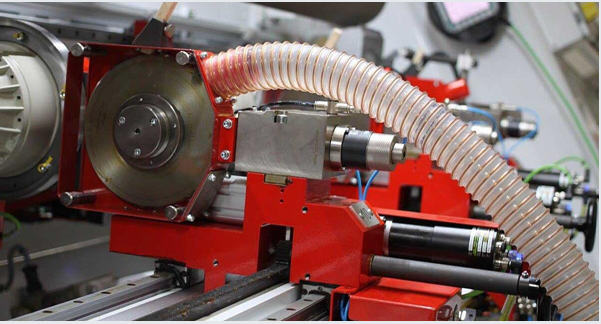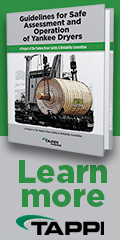Four Reasons Why You Should Worry about Not Having a Dust Removal System
 Print this Article | Send to Colleague Print this Article | Send to Colleague
The amount of dust created during slitting is of particular concern in tissue, paper and nonwovens plants, and this is especially true for manufacturers of hygienic fabric.The amount of dust created during slitting is of particular concern in tissue, paper and nonwovens plants, and this is especially true for manufacturers of hygienic fabric.
This will depend on the type of product, the production process itself and the speed at which production takes place. The deposition of dust in the slitting area may reduce the cutting efficiency, contaminate the finished product and contribute to environmental pollution.
For this reason it is important to have a high-quality dust removal system in place, something that has become one of the most appreciated industrial plant retrofits.

Reasons to have a dust removal system
It cannot be stressed enough how important it is to have an adequate dust removal system on your tissue, paper and nonwovens production line. Here are the primary reasons why you must have it:
1. Maintain product hygiene and quality
When the product is slit, fine dust from the product is released.This dust settles on the product as it is being wound, which effectively contaminates it and compromises its overall quality. This, as we’ve said before, is especially critical for the producers of hygienic fabric and manufacturers of wearable products.
Besides the obvious hygienic issues, no one wants to open the product packaging only to find it to be covered in slitting dust, particularly the one from another product (cross-contamination).
2. Improve worker health
When dust is released into the air, it becomes a safety hazard to workers, who can easily breathe it. This can cause them both minor and severe respiratory problems, especially those who already suffer from respiratory illness, such as asthma.
In addition, the accumulation of large amounts of dust in any area is a fire or explosive hazard!
3. Improve cutting efficiency
Simply put, when dust gathers on the slitting area, it can dull the blades and prevent them from operating at peak efficiency.
4. Avoid contamination
The effects of contamination from dust can range from plugged filters to obscured sensors on the production line.
This can result in an increased need for maintenance to clean the machinery and replace filters or even an increased machine downtime, should said machine break down due to dust contamination.
How a dust removal system works
A dust removal system can be installed at any part of the production line, including:
• In-line slitting winders• Rewinders
• Spooling lines (Nonwovens)• Printing lines
• Full enclosure (the dust removal system is incorporated in a self-supporting aluminium and polycarbonate structure).
The dust removal system for the slitting blade section includes suction heads that are positioned over the blade and a blower used to blow off any dust accumulation on the blade. The system also includes:
• A suction line, the power of which follows the machine rump up/down
• A fan that comes with a converter and a control unit
• Pipes and ducts to carry the dust away from the production area
• A filter to ensure dust is separated from the air.
Dust removal system upgrade
A.Celli offers a solution that will turn your slitting area of the production line into a dust-free zone. The system is usually custom designed to suit a plant’s individual needs to collect dust from the parts of the production line that need it most. This dust removal system:
• Will not interfere with any other equipment operating on the production line
• The captured dust will be conveyed through ducting from each of the suction boxes to a main duct
• Ensures there is a control damper on each of the branch lines to ensure balanced operation of the system
• Conveys air to the filter, which can be a wet or dry filter
• Returns the clean air to the plant and the waste to the production cycle in the form of white water.
Main features
The A.Celli dust removal system is designed to comply with all industry norms and standards. Our solution:
• Collects dust from 5 mg/m3 to 3 mg/m3
• Comes in a standard version or a full enclosure version
• Is made from high-quality materials
So, in summary, the advantages that you will enjoy are:
• A cleaner product• Less maintenance and cleaning required
• Less mechanical wear
• Safer and healthier work environment
• Increased final product quality
• Reduced costs. Back to Tissue360 Newsletter |





